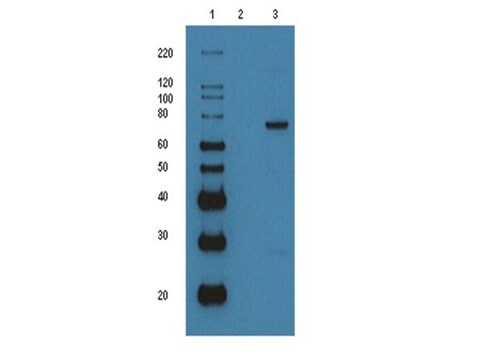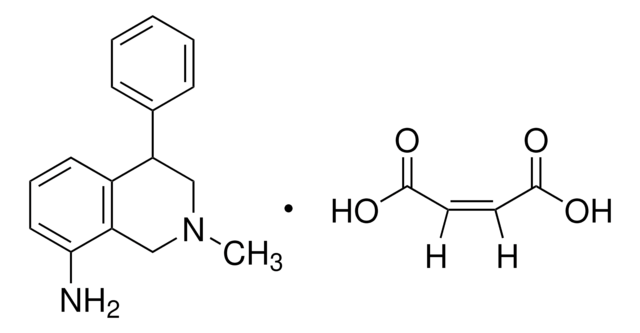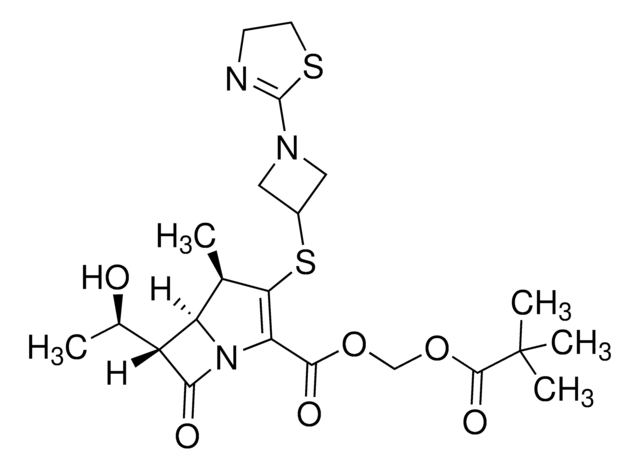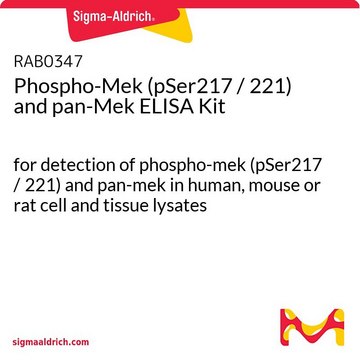SML1309
SQ109
≥98% (HPLC)
Synonym(s):
N-[(2E)-3,7-Dimethyl-2,6-octadienyl]-N′-tricyclo[3.3.1.13,7]dec-2-yl-1,2-ethanediamine, N-[(2E)-3,7-dimethyl-2,6-octadienyl]-NŒ-tricyclo[3.3.1.13,7]dec-2-yl-1,2-ethanediamine, NSC 722041
About This Item
Recommended Products
Quality Level
Assay
≥98% (HPLC)
form
oil
color
colorless to yellow
storage temp.
2-8°C
SMILES string
C/C(CCC=C(C)C)=C\CNCCNC1[C@@H]2C[C@@H]3C[C@H]1C[C@H](C2)C3
InChI
1S/C22H38N2/c1-16(2)5-4-6-17(3)7-8-23-9-10-24-22-20-12-18-11-19(14-20)15-21(22)13-18/h5,7,18-24H,4,6,8-15H2,1-3H3/b17-7+
InChI key
JFIBVDBTCDTBRH-REZTVBANSA-N
General description
Application
- as an antitubercular agent to study its interactions with mycobacterial membrane proteins large 3 (MmpL3) binding pocket
- as a positive control to determine the minimum inhibitory concentration (MIC) of ohmyungsamycins (OMS) A and B against Mycobacterium tuberculosis (Mtb) using the resazurin microtiter assay (REMA) plate method
- as an inhibitor of MmpL3 to explore the utility of mycobacterial CRISPR interference for validating target gene essentiality and compound mode of action
Biochem/physiol Actions
Storage Class Code
11 - Combustible Solids
WGK
WGK 3
Flash Point(F)
Not applicable
Flash Point(C)
Not applicable
Regulatory Listings
Regulatory Listings are mainly provided for chemical products. Only limited information can be provided here for non-chemical products. No entry means none of the components are listed. It is the user’s obligation to ensure the safe and legal use of the product.
JAN Code
SML1309-50MG:
SML1309-BULK:
SML1309-VAR:
SML1309-10MG:
Choose from one of the most recent versions:
Certificates of Analysis (COA)
Don't see the Right Version?
If you require a particular version, you can look up a specific certificate by the Lot or Batch number.
Already Own This Product?
Find documentation for the products that you have recently purchased in the Document Library.
Our team of scientists has experience in all areas of research including Life Science, Material Science, Chemical Synthesis, Chromatography, Analytical and many others.
Contact Technical Service








